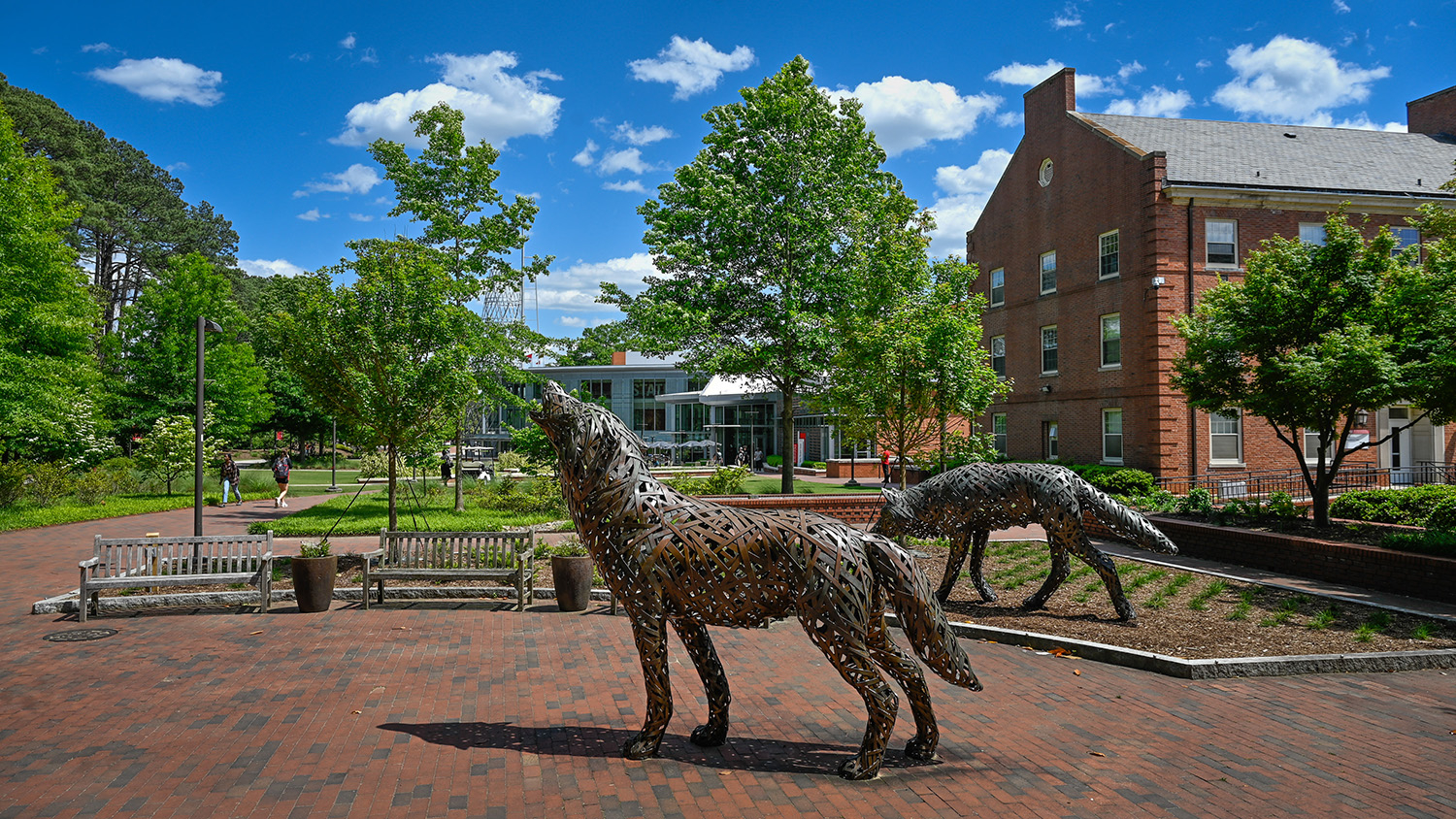The Dirt Whisperer
Say you’re a civil engineer looking for a good place to put a bridge. Wouldn’t it be nice to be able to ask the ground how stable it is before you start digging, like some sort of dirt whisperer? Or how close an older bridge is to failing after the surrounding soil has eroded for several years?
And wouldn’t it be really nifty if you could “talk” to fault lines to determine where earthquakes may be more likely to occur?
NC State physicist Karen Daniels thinks so. She’s looking at ways to help scientists and engineers see—and hear—the forces at play in the ground.

Following the Force Chains
Daniels studies forces in granular materials, like dirt. Not every grain in the pile bears weight equally, so when you compress the dirt the energy isn’t distributed equally. It travels through pathways called force chains. Understanding how the pile of dirt is being compressed is key to understanding how stable it is.
Daniels has created a simple way to see force chains in the lab, using special “grains” made out of plastic that transmits light when stress is applied. These grains are placed in a box and covered with sheets of polarized material, so that the transmitted light is visible to the human eye. When compressed, the force chains look like streaks of lightning, showing how the forces are distributed through the material.
Listening for Answers
Unfortunately you can’t do this with real dirt.
That’s where sound waves come in. Because acoustical probes are used to look at underground objects, Daniels and graduate student Eli Owens wanted to see if sound waves would follow the same force chains. If the sound waves and the force chains matched up, it could lead to a new technology that would help everyone from civil engineers to seismologists in the field.
So Daniels and Owens created some “smart particles” in their box of grains by embedding electric sensors in them to trace the movement of acoustic waves. They “talked” to the grains by shooting acoustic waves through the material. Lo and behold, the sound followed the same pathways.
The research is still in its early stages, but if the theory holds up, we may one day be able to ask the ground, “Which way do your force chains go?” and actually get an answer.
Daniels will continue her research on force chains in Germany this academic year, thanks to a fellowship from the Alexander von Humboldt Foundation. She’ll be working at the Max Planck Institute for Dynamics and Self-Organization.
- Categories:


